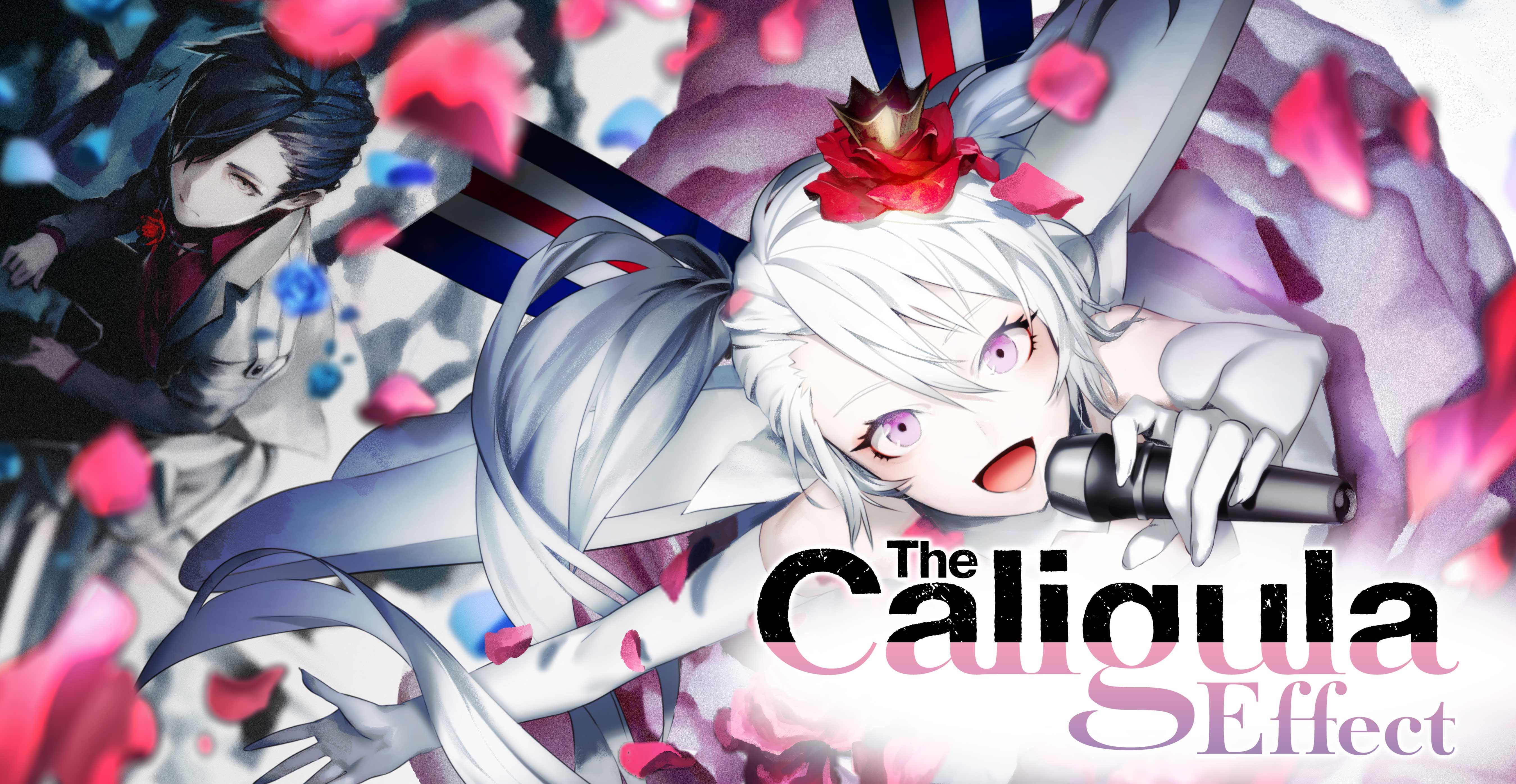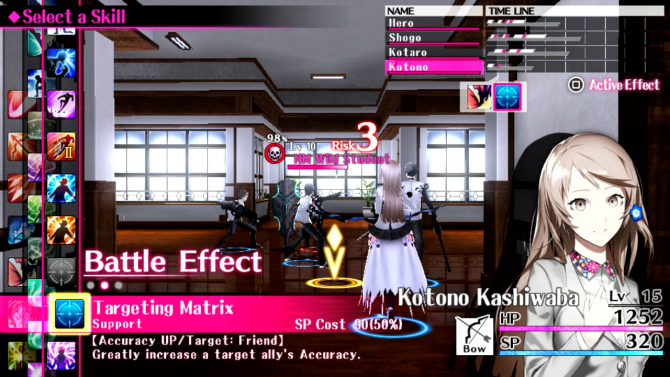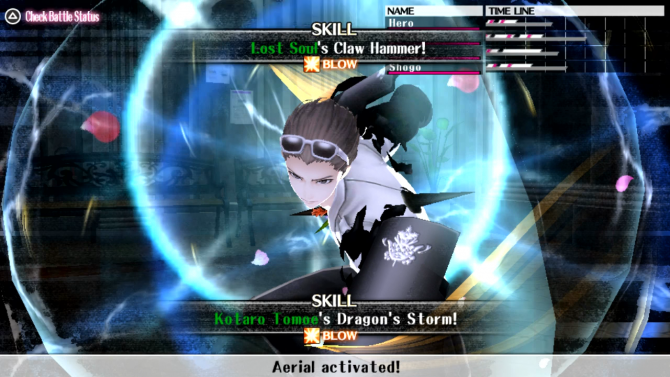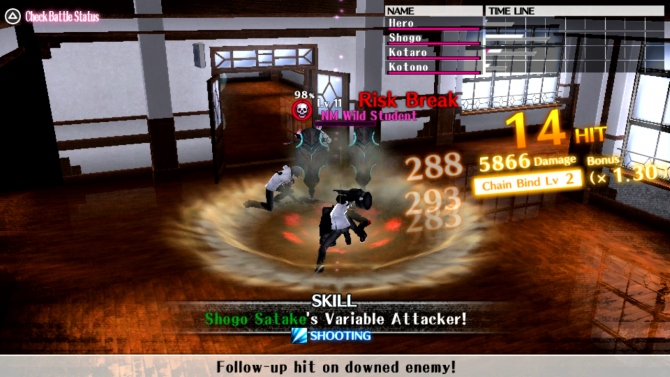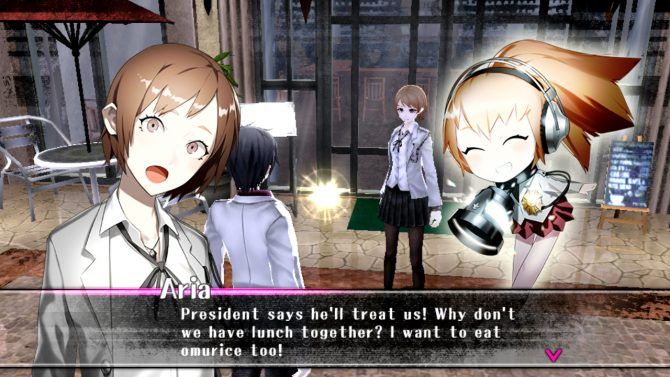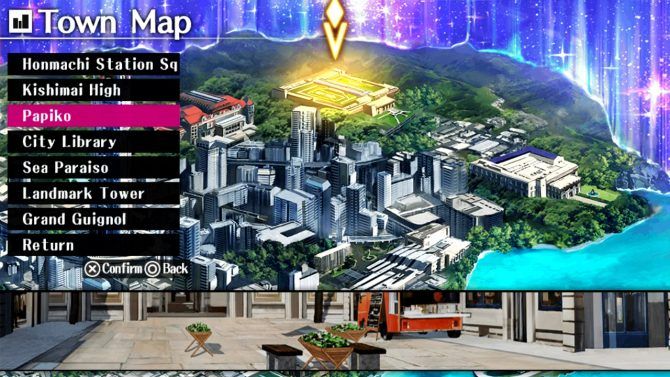When Atlus announced they will be localizing The Caligula Effect in the west, I must admit was beyond excited. Since its release in Japan, I have been amazed by the game's ambitious premise and unique turn based battle system.
The game seemed to have everything needed to be a great RPG, including Sword Art Online's development team, Aquaria, and scenario writer Tadashi Satomi, who worked on the first two Persona games. Sadly, the systems introduced in The Caligula Effect end up making the game feel cluttered and confusing, but at the same time push the Vita hardware to places I never thought possible.
The Caligula Effect is set in a virtual universe called "Mobius," where a school full of students have found themselves unknowingly trapped in by an idol singer named μ. Evidently, μ created this virtual world with the help of another virtual singer, Aria, in order to bring happiness to the world. However, things started getting weird and Aria decided that μ had become delusional and must be stopped.
In the beginning of the game, players assume the role of an unnamed protagonist who figures out that something isn't right and decides to try and escape. Coincidentally, this is easier said than done and he discovers that he's truly trapped in this world. Aria helps him find his true power so your character is able to fight back against μ's biggest supporters, digiheads, who wish to put a stop to your meddling ways.
Yes, it seems Aquaria has found it hard to step away from the trope of a group of students being trapped in a virtual world, but what can you do? So, as the story continues, our main protagonist figures out that there are other students around the school who can see these digiheads -- they call themselves the "Go Home Club." Over time Aria will grant each of the members the power to fight the digiheads, but first the game introduces a lot of side activities that the player can do while exploring the school.
Okay, so here is where the game shows off some systems that I would never have expected a Vita game to include. Each student at this school has a name and a particular area they tend to hang out around, after speaking to the students your affinity with that student increases and you become better friends. By simply talking to them this affinity meter increases, but you can also text them through your phone.
The texting sounds cool in premise, but in this case, it simply doesn't work. The responses are pretty much all identical and it's impossible to hold an actual conversation with the person. Using this feature isn't required to beat the game, but it does keep track of all the students that you've met and what your relationship with them is.
So over time these NPC students can join your party but, again, this isn't crucial to complete the game. These characters share similar skills to the main party members, but offer support and offensive techniques that I rarely used in battle. The only reason you'd want to use these characters is to level them up and take their skill points because abilities are unlocked using a shared point system.
So I think it's time to talk about the battle system, which is one of the most interesting and easily broken systems I've played in an RPG, but still finds a way to be fun after many hours of fighting. Battle are initiated by running into an enemy in a dungeon, but unlike other Vita RPGs there is no loading screen into the battle. Seen in games like the new Star Ocean 5, the battle begins wherever the enemy is encountered on the map, which is handled quite well on the Vita's hardware. However, at times there can be short, extended load times when exiting the battle.
Players are able to execute three actions for each character per turn if they have enough SP. Once an attack is selected you're able to see the outcome of the attack and how the enemy will react after. So in theory, it's possible to have your characters execute 12 actions, perfectly timed, while avoiding any enemy contact. Even though this battle system is one of the coolest and unique RPG systems I've ever played, it can be taken advantage during most encounters.
The main mission of the game is to search through the various dungeons and find these Ostinatos who are creating μ's songs and put a stop to them. The music is actually quite good and each song ends up getting stuck in your head as you're fighting and running around the map. But that's basically it for the main premise, learn about a new Ostinatos and stop him by defeating him in battle. Depending on your level, it's possible to defeat these bosses in one action if you time your attacks right, which I must admit feels cool, but doesn't do well to satisfy some of the masochist JRPG players out there.
One of the most redeeming factors about The Caligula Effect are these character episodes that can be found throughout the game. They are side stories that reveal more information about the Go Home Club members and are all quite interesting.
These backstories detail why the characters found themselves wanting to escape reality and how the ending up in Mobius. I would recommend that anyone who plays this game invest time into these sub plots and experience how powerful storytelling can be in a video game.
The issues with The Caligula Effect is that there's so much to do that wasn't executed well in the end. If only the developers ditched some of the social interactions for a more interesting main story, the game could appeal to a wider range of gamers. However, for those looking to sink the time needed to create relationships with the 500+ NPCs and discover all there is to do in the world of Mobius than it's possible this is the game for you.
The Caligula Effect has some of the coolest systems ever found on the Vita. The game seems to push what the system is capable of and perhaps that was asking too much. With some frame rate drops during battles and unnecessarily confusing dungeons, the game might get passed up by the more casual RPG players. However in the end, the side stories, characters, and awesome soundtrack saved the game and made me want to see it through to till the end.

